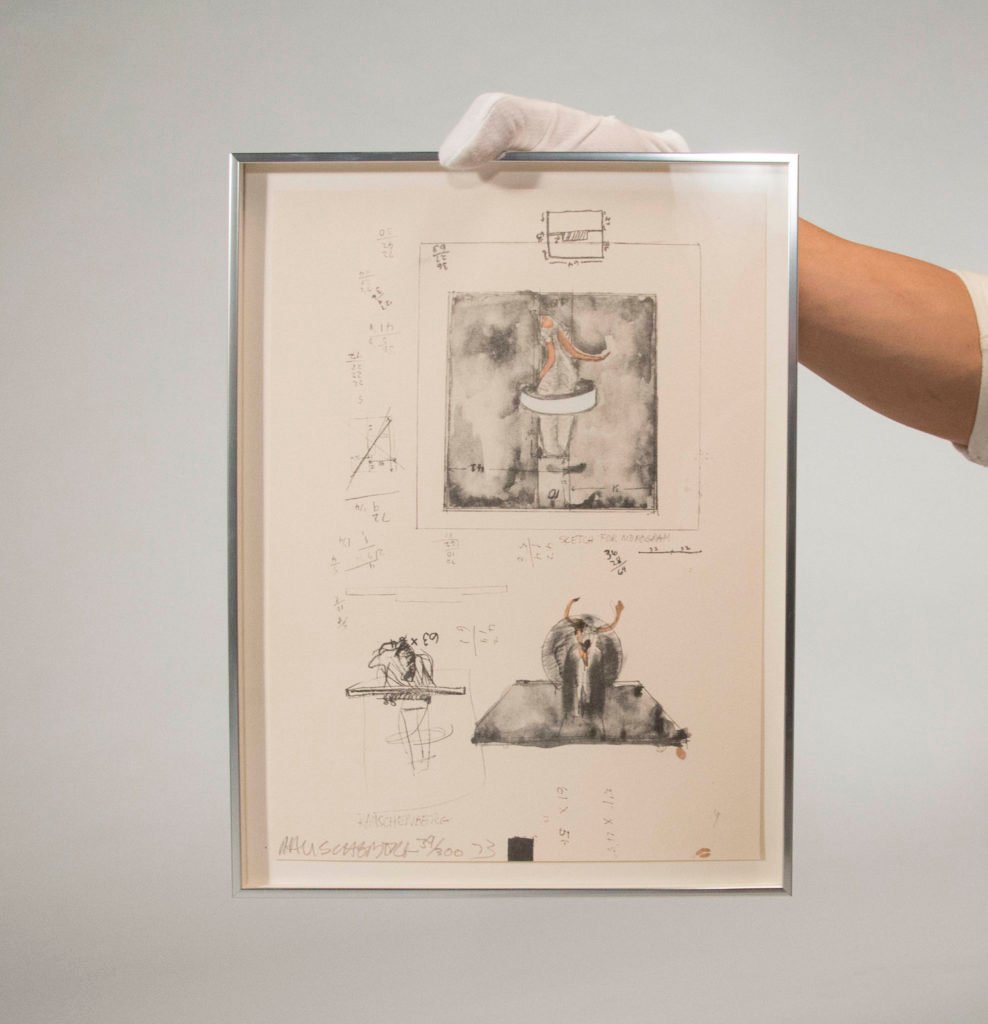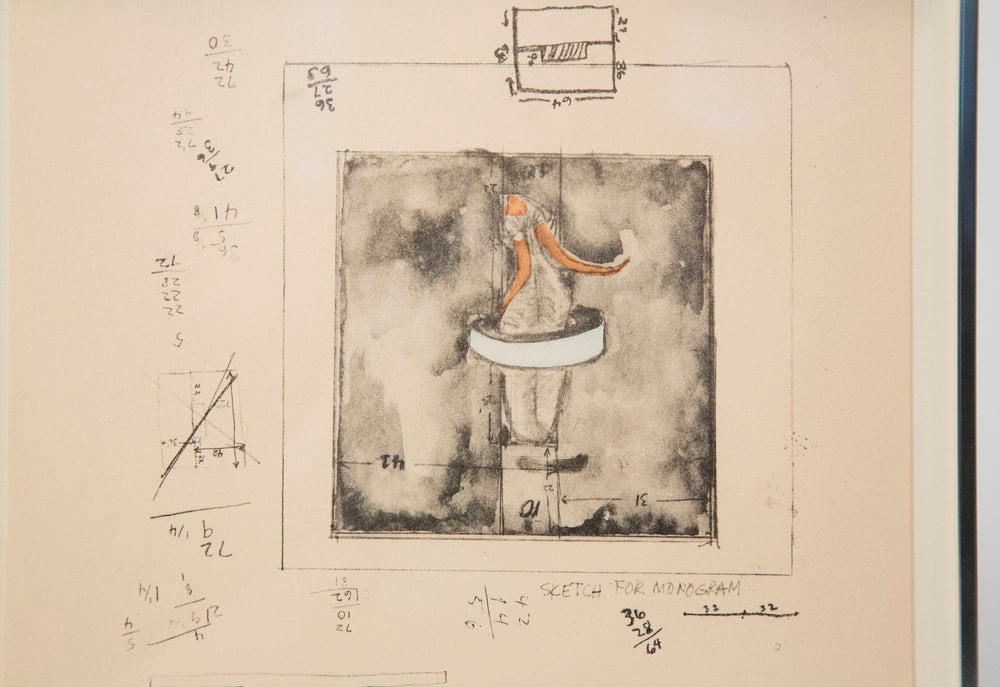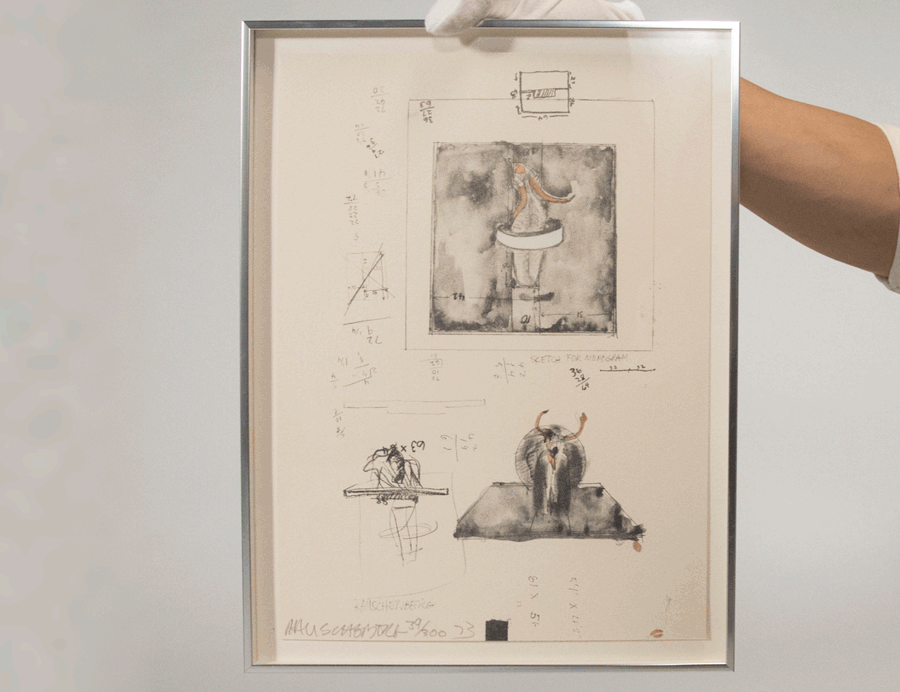Art World
This Artist Wants to ‘Erase’ a Robert Rauschenberg Print by Selling Ads to Cover It
The piece is inspired in part by Rauschenberg's "Erased de Kooning Drawing."

The piece is inspired in part by Rauschenberg's "Erased de Kooning Drawing."

Sarah Cascone

When New York artist Nikolas Bentel embarked on his latest project, he found inspiration in the work of the great Robert Rauschenberg (1925–2008). So he decided to buy one of the artist’s works and do what any true Rauschenberg acolyte would do: destroy it.
Titled The Erased Rauschenberg, Bentel’s piece is part homage, part protest—and nothing if not audacious. It’s inspired by Rauschenberg’s famed work Erased de Kooning Drawing (1953) in which the artist meticulously erased a work by Willem de Kooning to determine whether an artwork could be created by removing the marks of the original artist.
Like the young Rauschenberg, Bentel has turned to the work of a more famous artist—Rauschenberg himself—to give his gesture more significance. But his project is also meant as a commentary on the art market and the commodification of artworks, which Bentel believes function much like companies on the stock market.
“Over the years, the art world has become way more interested in the monetary value of famous art pieces rather then their cultural importance,” wrote Bentel, a resident in the New Museum’s art and design incubator in New York, in an email to artnet News. “My project is here to point this problem out by having the art world perform arbitrage on itself.”

Nikolas Bentel intends to destroy Robert Rauschenberg’s Untitled (1973) by selling advertising to cover the original print. Courtesy of Nikolas Bentel.
“I thought that if Robert Rauschenberg could do this to someone else, why can’t I do this to him?” said Bentel in a video on the project’s website. When purchasing a piece by the artist proved outside Bentel’s budget, he got creative. “What if the act of purchasing the art piece was actually the destruction process?” he asked.
Now, Bentel is selling advertising to finance the piece’s $10,000 purchase price, or $92.59 per square inch, the unit available for sale. (Artist and art collector Hojae Kim has agreed to part ways with the untitled 1973 print, knowing full well its intended fate.)

Nikolas Bentel intends to destroy Robert Rauschenberg’s Untitled (1973), a detail of which is seen here, by selling advertising to cover the original print. Courtesy of Nikolas Bentel.
“If you buy space, you get to put anything you would like on your space,” Bentel explained. So far, most of the ads sold have been to “ad agencies and small companies that are slightly affiliated with the art world.” He estimates he has sold around 30 percent of the available slots.
According to Bentel, the very system that created the work’s value—the art market—is also the “reason it is economically viable for it to be destroyed.” As he explained in a second video: “The art market is, for all intents and purposes, a glorified stock market.”

Nikolas Bentel intends to destroy Robert Rauschenberg’s Untitled (1973) by selling advertising to cover the original print. Courtesy of Nikolas Bentel.
For his part, Rauschenberg had his own method of art-market critique. Bentel’s video includes footage of the artist shoving the collector Robert Scull after he auctioned off one of the artist’s paintings, which he originally purchased for $900 and flipped for $85,000. “For Christ’s sake, you didn’t even send me flowers,” said a peeved Rauschenberg. “I’ve been working my ass off for you to make that profit?”
“The reverence that we give the art market is the reason why the art market bubble has yet to be popped,” Bentel added. “My goal is to use the capitalism of the art market against itself. Since art market capitalism was once the force that created the artwork’s value, it will now be the force that will destroy the artwork.”
Watch one of Bentel’s videos about the project: